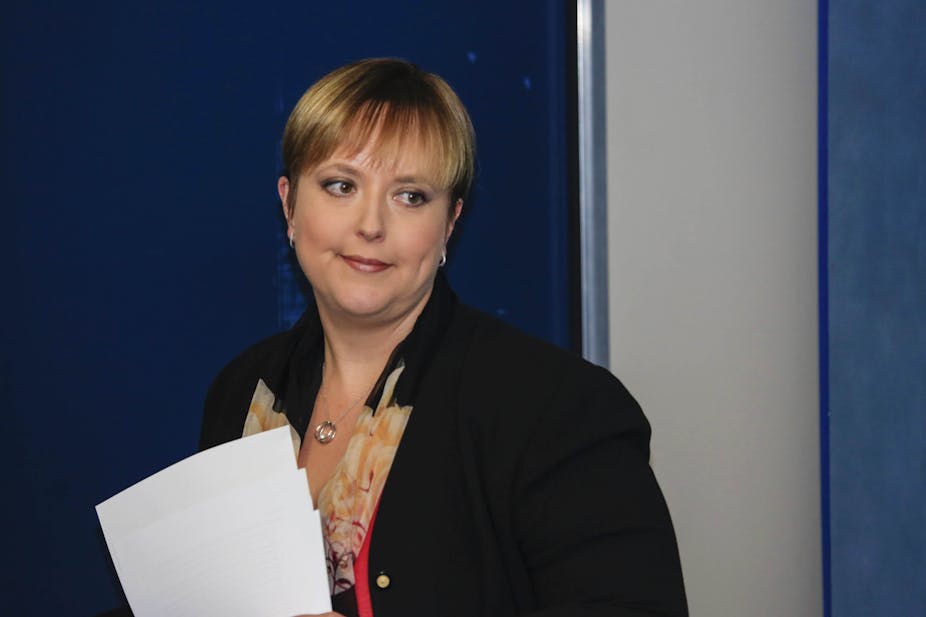Tasmanian premier Lara Giddings cleared the way for the state to head to the polls late last week. Having sacked Greens ministers Nick McKim and Cassy O'Connor from her Cabinet, Giddings set the election date for March 15.
So, what’s left for the Giddings government to do, and how will it play out before March 15?
The end of the Greens alliance, which Labor had used to govern in minority since the 2010 state election, is largely a party-political act designed to appeal to the Labor heartland. There was no actual need for it to end, as the Greens were able to step outside Cabinet and argue against government policy on matters of conscience. This was an arrangement that had worked well for four years.
Giddings will recall parliament on January 28 in order to pass legislation – with opposition Liberal support – to secure the legality of the process to approve a large-scale pulp mill in the northern Tamar Valley. Again, this move is designed to show political support for a contentious project that has little likelihood of getting off the ground.
Finally, in a further political signal to the heartland, Giddings said that Labor will never allow the Greens into Cabinet again. These are desperate times for Labor, which is polling at 22%, down from 36.9% at the 2010 election. And one wonders how it would govern without the Greens, who are polling at 19%, down from 21.6% in 2010.
As a result of these polls, some sort of governing arrangement with Green support would be Tasmanian Labor’s only hope of returning to government after March 15, at least on current voter preferences. If it were not Cabinet posts that the Greens were offered, then it would likely need to be significant environmental policy concessions in order to secure their support.
The Greens have supported minority governments in Tasmania on two previous occasions. They supported a Labor government between 1989 and 1991 in return for policy concessions alone, and a Liberal government (1996-98) in return for a more sketchy commitment to co-operative politics. Neither arrangement achieved the certainty, stability and productivity brought by having Greens in Cabinet.
While Giddings announced her intention to hold an election on March 15, her recall of parliament – having cut loose the Greens – creates great uncertainty. The Greens are now free to move a vote of no confidence in the minority government over the pulp mill legislation. The government may fall, depending what the Liberal opposition chooses to do.
The scene is set, therefore, for a divisive election campaign, whatever the actual date or the politics of setting it. Pulp mill politics will prove the major battleground, but so will Labor’s dive to the right. The ALP has promised an economic revival on the back of failing industries such as forestry and provocatively pre-selected anti-Green, conservative candidates Bob Gordon and Julian Amos.
State economic development will dominate the election campaign, with Labor promising what would need to be a state-sponsored revival of traditional industries. Labor will also support the transition, long advocated by the Greens, to a jobs-rich new economy based on the digital and creative industries, and niche produce, science, aged care and international education.
The Liberal opposition will be arguing for a Tasmania that is open for business, stripped of green and red tape, and where forestry will return to prominence. Along with arguments about state development, there are concerns in the electorate about Tasmania’s relatively high unemployment rate, poverty and social disadvantage, and an over-reliance on federal funding.

Ordinarily, federal issues would not figure in a state election. However, the March poll will almost certainly pass judgement on the Coalition federal government. Labor will also extend its scare campaign that a Liberal state government would not oppose Tasmania’s share of the national goods and services tax being diminished by the Coalition.
Labor will campaign to protect national funding for disability insurance, broadband, health and education. Greens leader Nick McKim has already been aggressively attacking the Coalition for its threats to health care, education, legal aid, Tasmania’s world heritage listings and protected forests, and advances in same-sex marriage. His party will likely keep the pressure on the two major parties.
However, Labor has painted itself into a bizarre corner – much as federal Labor did in 2013 – where it is either unwilling or unable to praise its own achievements in government, given that these were supported by, and in some case the responsibilities of, the Greens. Giddings herself has been effusive in praising her now-sacked Green ministers.
With Giddings and the Greens trading compliments on how well they have worked together, it is hard to give credibility to the Labor-Green divorce. It may well be designed merely to appease the trade unions, right-wing party members and traditional Labor voters. But it is also a political ploy that will help the Greens campaign strongly to their own base as March 15 looms.

